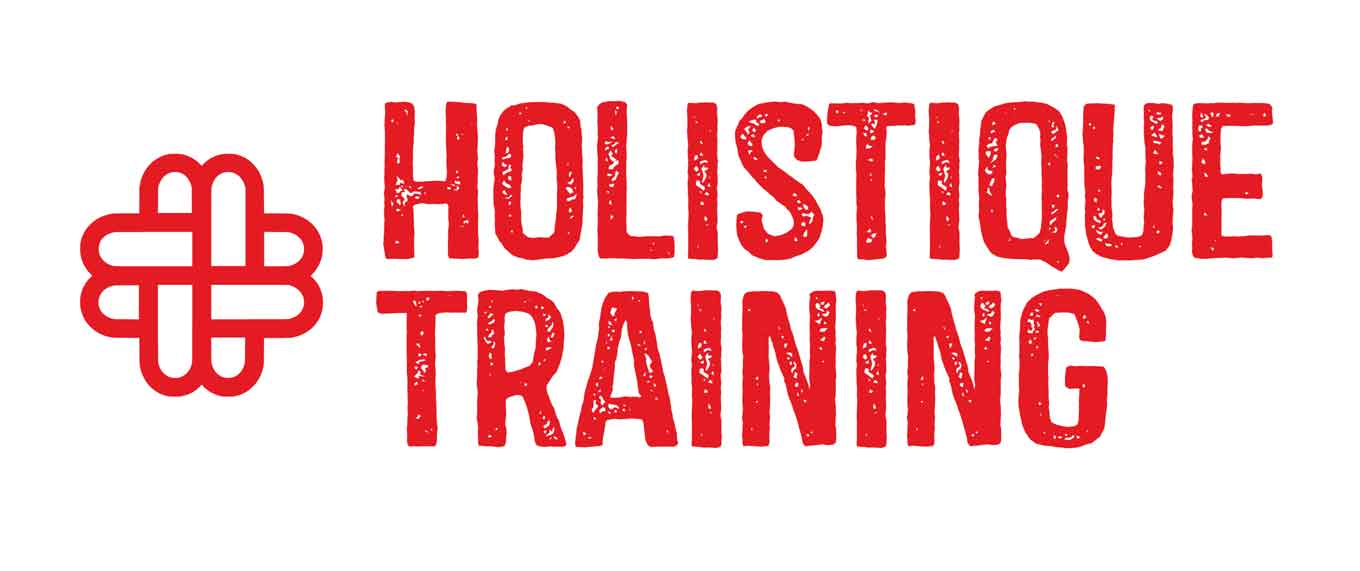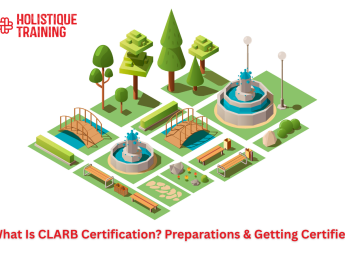- Table of Contents
- Introduction
- What is CLARB?
- How Does CLARB Work?
- Standards
- Licensure Support
- Continuing Education
- The Importance of the CLARB Certification
- 1. Public Trust and Safety
- 2. Professional Recognition
- 3. Career Advancement Opportunities
- 4. Networking and Professional Development
- 5. Commitment to Lifelong Learning
- 6. Advocacy for Professional Standards
- 7. Enhanced Credibility and Ethical Practice
- What is the CLARB Certification Process?
- 1. Eligibility Requirements
- 2. Application Process
- 3. Verification Process
- 4. Approval to Take the LARE
- 5. Landscape Architect Registration Examination (LARE)
- 6. Post-Examination Process
- 7. Maintaining Certification
- Preparing for the CLARB Certification
- 1. Understanding the Exam Format
- 2. Study Resources
- 3. Study Groups
- 4. Create a Study Schedule
- 5. Focus on Weak Areas
- 6. Practice Time Management
- 7. Stay Informed
- Tips to Pass CLARB Certification
- Create a Study Schedule
- Focus on Weak Areas
- Practice Time Management
- Utilize Multiple Study Methods
- Stay Informed
- Conclusion
Introduction
The field of landscape architecture is both an art and a science, requiring a unique blend of creativity, technical skill, and environmental awareness. As professionals in this field navigate the complexities of design, planning, and environmental stewardship, one organization plays a pivotal role in ensuring that practitioners meet the highest standards of excellence: the Council of Landscape Architectural Registration Boards (CLARB). This blog post delves into the essential aspects of CLARB, including its purpose, functionality, the significance of its certification, the certification process, and tips for success. By the end, readers will gain a thorough understanding of CLARB and its vital role in the landscape architecture profession.
What is CLARB?
The Council of Landscape Architectural Registration Boards, commonly referred to as CLARB, is a non-profit organization established in 1979. Its mission is to advance the practice of landscape architecture by promoting professional licensure and establishing standards for education, examination, and continuing education. CLARB serves as a central authority for landscape architectural registration boards across the United States and Canada, providing resources, support, and guidance to enhance the profession's integrity and effectiveness.
At its core, CLARB aims to protect the public by ensuring that landscape architects are qualified to practice. This is achieved by facilitating licensure processes, developing examination standards, and promoting best practices in landscape architecture education. By maintaining a high level of professionalism and accountability, CLARB helps to ensure that landscape architects are equipped to address the challenges of designing sustainable and functional outdoor spaces.
How Does CLARB Work?
CLARB operates as a pivotal organization within the landscape architecture profession, acting as a bridge between regulatory bodies, educational institutions, and practitioners. Its multifaceted approach ensures that landscape architects meet the highest standards of practice and professionalism. Here’s a look at how CLARB functions, focusing on its core areas: standards, licensure support, and continuing education.
Standards
Establishing and maintaining rigorous standards is one of CLARB's primary responsibilities, such as the Landscape Architecture Accreditation Board (LAAB) Standards. These standards are crucial for ensuring that landscape architecture education and practice align with the competencies required for professional success. Here’s how CLARB sets and upholds these standards:
- Curriculum Development: CLARB collaborates with accredited academic institutions to develop curricular guidelines that reflect current industry practices and emerging trends. This collaboration ensures that educational programs equip students with the necessary skills and knowledge to thrive in the profession.
- Competency Framework: CLARB has developed a competency framework that outlines the essential skills and knowledge areas that landscape architects must master. This framework serves as a benchmark for both educational programs and licensure examinations, ensuring consistency across jurisdictions.
- Accreditation Support: While CLARB does not accredit programs directly, it provides resources and guidance to educational institutions seeking accreditation from recognized bodies. This support helps ensure that landscape architecture programs meet national standards and produce qualified graduates.
- Regular Review: CLARB continuously reviews and updates its standards to reflect changes in technology, environmental practices, and societal needs. This dynamic approach ensures that the profession evolves in response to new challenges and opportunities.
Licensure Support
Licensure is a critical aspect of professional practice in landscape architecture, and CLARB plays a vital role in supporting state licensing boards. Here’s how CLARB facilitates the licensure process:
- Exam Development: One of CLARB's most significant contributions is the development of the Landscape Architect Registration Examination (LARE). This examination assesses candidates' knowledge and skills across various areas of landscape architecture, including design, construction documentation, and project administration. CLARB ensures that the LARE is rigorous, fair, and reflective of the competencies needed for professional practice.
- Resource Provision: CLARB provides state licensing boards with resources and tools to support the licensure process. This includes guidelines for establishing examination procedures, best practices for evaluating candidates, and administrative support for managing licensure applications.
- Interstate Reciprocity: CLARB promotes interstate reciprocity, allowing licensed landscape architects to practice in multiple jurisdictions without undergoing redundant examinations. This initiative streamlines the licensure process and facilitates professional mobility, enabling landscape architects to respond to opportunities across state lines.
- Data and Research: CLARB conducts research on licensure trends, workforce needs, and educational outcomes, providing valuable insights to state boards and educational institutions. This data-driven approach helps inform policy decisions and enhances the overall effectiveness of the licensure system.
Continuing Education
To maintain licensure and ensure ongoing professional development, landscape architects must engage in continuing education. CLARB recognizes the importance of lifelong learning and actively promotes opportunities for professional growth. Here’s how CLARB supports continuing education:
- Continuing Education Requirements: CLARB provides guidelines for continuing education requirements that state licensing boards can adopt. These requirements ensure that landscape architects stay current with industry advancements, regulatory changes, and best practices.
- Professional Development Resources: CLARB offers a variety of resources to help landscape architects fulfill their continuing education needs. This includes access to webinars, workshops, conferences, and online courses that cover a wide range of topics relevant to the profession.
- Networking Opportunities: Through its partnerships with professional organizations and educational institutions, CLARB facilitates networking opportunities for landscape architects. These connections can lead to collaborative learning experiences, mentorship, and shared knowledge among practitioners.
- Recognition of Continuing Education Providers: CLARB recognizes and endorses various continuing education providers, ensuring that landscape architects have access to high-quality educational opportunities. This recognition helps maintain the integrity of continuing education programs and promotes a culture of excellence in the profession.
Through its comprehensive approach to establishing standards, supporting licensure, and promoting continuing education, CLARB plays an essential role in shaping the landscape architecture profession. By ensuring that practitioners meet rigorous standards and engage in lifelong learning, CLARB helps protect the public interest and enhances the credibility of landscape architects. As the profession continues to evolve, CLARB's commitment to excellence will remain a cornerstone of its mission, fostering a community of skilled and knowledgeable landscape architects dedicated to creating sustainable and impactful outdoor environments.
Feature/Aspect | CLARB Certification | ASLA Certification |
Governing Body | Council of Landscape Architectural Registration Boards (CLARB) | American Society of Landscape Architects (ASLA) |
Focus | Licensure and professional competency | Professional development and recognition |
Exam Structure | Landscape Architect Registration Examination (LARE) | No formal exam; involves portfolio review and professional experience |
Continuing Education | Required to maintain certification | Encouraged but not mandatory for membership |
Recognition | Widely recognized for licensure across the U.S. and Canada | Recognized for professional development and networking within the landscape architecture community |
The Importance of the CLARB Certification
The CLARB certification serves as a critical benchmark within the landscape architecture profession, symbolizing a commitment to excellence, ethical practice, and ongoing professional development. This certification is not merely a credential; it embodies the values and standards that define the landscape architecture field. Here are several key reasons highlighting the significance of CLARB certification:
1. Public Trust and Safety
One of the primary roles of landscape architects is to design outdoor spaces that are safe, functional, and environmentally sustainable. By obtaining CLARB certification, landscape architects demonstrate their adherence to high professional standards, which helps build public trust. This certification assures clients, stakeholders, and the general public that certified professionals possess the necessary knowledge and skills to make informed decisions regarding land use, environmental impact, and community well-being.
2. Professional Recognition
CLARB certification is recognized across the United States and Canada, providing landscape architects with a distinct advantage in a competitive job market. Employers often prioritize candidates with certification, as it indicates a commitment to the profession and a thorough understanding of industry standards. This recognition not only enhances an individual's employability but also elevates the status of the profession as a whole.
3. Career Advancement Opportunities
Achieving CLARB certification can significantly impact a landscape architect's career trajectory. Many professionals find that certification opens doors to new job opportunities, promotions, and leadership roles within their organizations. It can also lead to increased earning potential, as certified landscape architects are often viewed as more valuable assets to their employers due to their proven expertise and commitment to professional standards.
4. Networking and Professional Development
CLARB certification provides access to a network of other certified professionals, fostering collaboration and knowledge sharing within the landscape architecture community. This network can be invaluable for career growth, offering opportunities for mentorship, partnerships, and professional development. Additionally, many professional organizations and conferences recognize CLARB certification, further enhancing networking opportunities and access to industry resources.
5. Commitment to Lifelong Learning
The process of obtaining and maintaining CLARB certification emphasizes the importance of continuing education and professional development. Certified landscape architects are required to engage in ongoing learning to stay current with industry trends, technologies, and best practices. This commitment to lifelong learning not only enhances individual competence but also contributes to the overall advancement of the landscape architecture profession.
6. Advocacy for Professional Standards
CLARB certification plays a vital role in advocating for the importance of licensure and professional standards within the field. By upholding rigorous certification requirements, CLARB helps to ensure that landscape architects are qualified to practice and that the profession maintains its integrity. This advocacy is crucial in promoting public awareness of the value of licensed professionals in landscape architecture and the critical role they play in shaping sustainable environments.
7. Enhanced Credibility and Ethical Practice
Obtaining CLARB certification signifies a landscape architect's commitment to ethical practice and professional responsibility. The certification process includes a thorough examination of candidates’ knowledge in areas such as design principles, environmental stewardship, and project management. This comprehensive assessment ensures that certified professionals are equipped to address the ethical challenges they may encounter in their work, thereby enhancing the credibility of the profession as a whole.
The importance of CLARB certification extends far beyond a simple designation; it represents a commitment to excellence, public safety, and the advancement of the landscape architecture profession. By achieving this certification, landscape architects not only enhance their own careers but also contribute to the integrity and credibility of the field. In an ever-evolving landscape, the CLARB certification serves as a vital tool for professionals seeking to navigate the complexities of their practice while upholding the highest standards of quality and ethical responsibility.
What is the CLARB Certification Process?
The CLARB certification process is a structured pathway designed to ensure that landscape architects possess the necessary education, experience, and competencies to practice at a professional level. This process is essential for maintaining the integrity and standards of the landscape architecture profession. Here’s a detailed overview of the key components involved in the CLARB certification process:
1. Eligibility Requirements
Before candidates can begin the certification process, they must meet specific eligibility criteria. These requirements ensure that only qualified individuals can pursue certification. Key eligibility factors include:
- Educational Background: Candidates are required to hold a degree from an accredited landscape architecture program. CLARB recognizes various degrees, including Bachelor’s and Master’s degrees in landscape architecture. The accreditation ensures that the educational program meets the standards set by the profession.
- Professional Experience: Candidates must accumulate a certain amount of professional experience under the supervision of a licensed landscape architect. Typically, this experience ranges from two to four years, depending on the candidate's educational background. This practical experience is crucial as it allows candidates to apply their academic knowledge in real-world settings, gaining insights into the complexities of landscape architecture practice.
2. Application Process
Once candidates confirm their eligibility, they can proceed with the application process. This involves several steps:
- Completing the Application Form: Candidates must fill out a detailed application form that includes information about their educational qualifications, professional experience, and any relevant documentation that supports their application.
- Documentation Submission: Along with the application form, candidates are required to submit official transcripts, proof of employment, and any other necessary documents that verify their qualifications and experience. This documentation is essential for CLARB to assess the candidate's eligibility accurately.
- Application Fee: Candidates must pay an application fee, which varies based on the specific requirements and processes involved. This fee helps support the administrative costs associated with processing applications and maintaining the certification program.
3. Verification Process
Once the application is submitted, CLARB conducts a verification process to ensure that all information provided is accurate and meets the eligibility criteria. This process includes:
- Review of Educational Credentials: CLARB verifies that the candidate’s degree is from an accredited program and that the coursework aligns with the competencies required for certification.
- Experience Validation: The organization reviews the candidate’s professional experience to confirm that it meets the stipulated requirements. This may involve contacting employers or supervisors to validate the candidate's work history and responsibilities.
4. Approval to Take the LARE
Upon successful verification of the application, candidates receive approval to take the Landscape Architect Registration Examination (LARE). This examination is a critical component of the certification process, designed to assess the candidate's knowledge and skills in various aspects of landscape architecture.
5. Landscape Architect Registration Examination (LARE)
The LARE is a comprehensive examination that evaluates candidates across multiple domains relevant to landscape architecture. It typically consists of several sections, each focusing on different competencies:
- Project and Construction Administration: This section assesses candidates' understanding of project management principles, contract administration, and construction documentation.
- Inventory and Analysis: Candidates are tested on their ability to analyze site conditions, assess environmental impacts, and understand the context of their designs.
- Design: This section evaluates candidates' design skills, including their ability to create functional and aesthetically pleasing outdoor spaces that meet client needs and environmental standards.
- Grading, Drainage, and Construction Documentation: Candidates must demonstrate their knowledge of grading and drainage principles, as well as their ability to produce detailed construction documents.
Each section of the LARE is designed to be challenging, reflecting the complexities of professional practice. Candidates must pass all sections to achieve certification.
6. Post-Examination Process
After completing the LARE, candidates receive their results, which indicate whether they have passed or failed each section. If a candidate does not pass a section, they have the opportunity to retake it in subsequent testing windows. Once all sections are successfully completed, candidates are awarded CLARB certification.
7. Maintaining Certification
CLARB certification is not a one-time achievement; it requires ongoing commitment to professional development. Certified landscape architects must engage in continuing education to maintain their certification. This includes completing a specified number of continuing education units (CEUs) over a designated period, ensuring that they stay current with industry trends, technologies, and best practices.
The CLARB certification process is a comprehensive pathway that ensures landscape architects are well-prepared to meet the demands of the profession. By establishing rigorous eligibility requirements, a thorough application process, and a challenging examination, CLARB upholds the standards necessary for professional practice. This certification not only enhances individual careers but also contributes to the overall integrity and credibility of the landscape architecture field, ensuring that certified professionals are equipped to design sustainable and impactful outdoor spaces.
Here are some of the challenges you might face while trying to get the CLARB certification, with solutions for each challenge:
Challenge | Solution |
Understanding Exam Format | Review official CLARB study guides and resources to familiarize yourself with the exam structure |
Limited Study Resources | Utilize a variety of resources, including online courses, textbooks, and practice exams to enhance preparation |
Managing Time for Study | Create a structured study schedule that allocates specific time blocks for each topic and includes regular breaks |
Overcoming Test Anxiety | Practice relaxation techniques and take timed practice exams to build confidence and reduce anxiety |
Maintaining Professional Experience Requirements | Seek internships or mentorships to gain relevant experience under licensed professionals while preparing for the exam |
Preparing for the CLARB Certification
Successfully navigating the CLARB certification process requires thorough preparation, as the Landscape Architect Registration Examination (LARE) is designed to assess a candidate's knowledge and skills comprehensively. Here are some key strategies and resources to help candidates effectively prepare for the CLARB certification:
1. Understanding the Exam Format
Familiarizing oneself with the structure and content of the LARE is crucial for effective preparation. Candidates should take the time to review the exam outline provided by CLARB, which details the topics covered in each section. Understanding the format will help candidates focus their study efforts on relevant areas and become comfortable with the types of questions they will encounter.
2. Study Resources
Utilizing a variety of study resources can enhance preparation efforts. Key resources include:
- Official Study Guides: CLARB offers official study guides that outline the key concepts and competencies tested in the exam. These guides serve as a roadmap for candidates, helping them identify essential topics and areas of focus.
- Practice Exams: Taking practice exams can help candidates become familiar with the exam format and timing. Many organizations and online platforms offer practice questions and simulation exams that mimic the actual LARE experience. This practice can help candidates build confidence and improve their test-taking strategies.
- Online Courses and Workshops: Numerous organizations provide online courses specifically designed to prepare candidates for the LARE. These courses often include lectures, interactive materials, and quizzes that cover a wide range of topics relevant to the exam.
- Textbooks and Reference Materials: Reviewing key textbooks and reference materials used in landscape architecture programs can reinforce foundational knowledge. Candidates should focus on texts that cover design principles, site analysis, environmental regulations, and construction documentation.
3. Study Groups
Joining a study group can provide valuable support and motivation during the preparation process. Collaborating with peers allows candidates to:
- Share Resources: Study groups can facilitate the exchange of study materials, notes, and resources, enriching the learning experience for all members.
- Discuss Challenging Concepts: Engaging in discussions about complex topics can deepen understanding and clarify misunderstandings. Group members can help each other tackle difficult concepts and provide different perspectives on the material.
- Accountability: Being part of a study group can help keep candidates accountable to their study schedules. Regular meetings and check-ins can motivate members to stay on track with their preparation.
4. Create a Study Schedule
Developing a structured study schedule can help candidates manage their time effectively. Candidates should consider the following when creating their schedules:
- Set Specific Goals: Break down the study material into manageable sections and set specific goals for each study session. This approach helps ensure comprehensive coverage of all topics.
- Allocate Time Blocks: Designate specific time blocks for studying different sections of the LARE. Consistent study sessions, even if short, can lead to better retention of information.
- Incorporate Breaks: Ensure that the study schedule includes regular breaks to prevent burnout. Short breaks can enhance focus and productivity during study sessions.
5. Focus on Weak Areas
Identifying areas of weakness early in the preparation process is essential. Candidates should:
- Assess Knowledge Gaps: Take practice exams or self-assessments to identify which topics require more attention. This targeted approach allows candidates to allocate extra study time to challenging areas.
- Review and Reinforce: Spend additional time reviewing materials related to weak areas, utilizing various resources to reinforce understanding. This might include revisiting textbooks, watching instructional videos, or engaging in discussions with peers.
6. Practice Time Management
Effective time management during the exam is crucial for success. Candidates should practice answering questions within a set timeframe to simulate the exam experience. This practice can help them develop pacing strategies and reduce anxiety on exam day. Key strategies include:
- Timed Practice Tests: Regularly taking timed practice tests can help candidates become accustomed to the exam's pacing and pressure.
- Strategic Question Approaches: Candidates should develop strategies for tackling different types of questions, such as multiple-choice and case studies, to maximize efficiency during the exam.
7. Stay Informed
Keeping up with industry trends, regulations, and best practices can provide valuable context for exam questions. Candidates can enhance their knowledge and readiness by:
- Reading Industry Publications: Subscribing to relevant journals, magazines, and newsletters can help candidates stay updated on the latest developments in landscape architecture.
- Participating in Webinars and Workshops: Engaging in professional development opportunities can expose candidates to new ideas and practices, enriching their understanding of the field.
Preparing for the CLARB certification requires a multifaceted approach that includes understanding the exam format, utilizing diverse study resources, and engaging in collaborative learning. By creating a structured study plan, focusing on weak areas, and practicing effective time management, candidates can enhance their chances of success on the LARE. Ultimately, thorough preparation not only equips candidates with the knowledge needed to pass the exam but also fosters the confidence and competence essential for a successful career in landscape architecture.
Tips to Pass CLARB Certification
Successfully passing the CLARB certification requires dedication and effective study strategies. Here are some practical tips to increase the chances of success:
Create a Study Schedule
Developing a structured study schedule can help candidates manage their time effectively. Allocate specific time blocks for studying different sections of the LARE, and stick to the schedule to ensure comprehensive coverage of all topics.
Focus on Weak Areas
Identify areas of weakness early in the preparation process and devote extra time to those topics. This targeted approach can help candidates build confidence and improve their overall performance.
Practice Time Management
During the exam, managing time effectively is crucial. Candidates should practice answering questions within a set timeframe to simulate the exam experience. This will help them develop pacing strategies and reduce anxiety on exam day.
Utilize Multiple Study Methods
Incorporating a variety of study methods can enhance retention and understanding. Consider using visual aids, flashcards, and interactive quizzes to reinforce learning and keep study sessions engaging.
Stay Informed
Keeping up with industry trends, regulations, and best practices can provide valuable context for exam questions. Regularly reading industry publications and participating in professional development opportunities can enhance candidates' knowledge and readiness.
Conclusion
The journey to becoming a certified landscape architect through CLARB is a significant undertaking that requires dedication, preparation, and a commitment to excellence. By understanding the role of CLARB, the certification process, and effective preparation strategies, aspiring landscape architects can navigate this path with confidence. Achieving CLARB certification not only enhances professional credibility but also contributes to the overall integrity of the landscape architecture profession. As the field continues to evolve, the importance of maintaining high standards through organizations like CLARB will remain paramount, ensuring that landscape architects are equipped to create sustainable and impactful outdoor spaces for future generations.

























